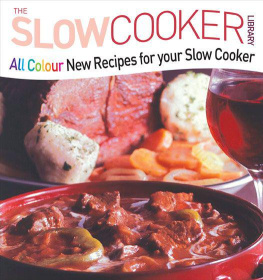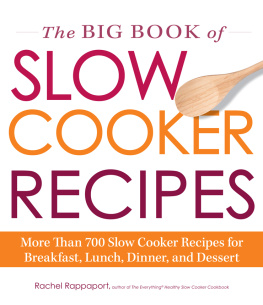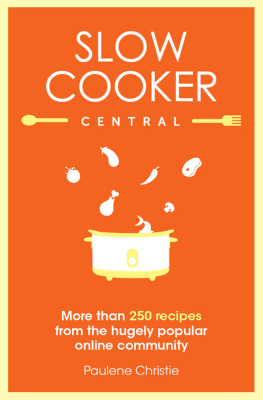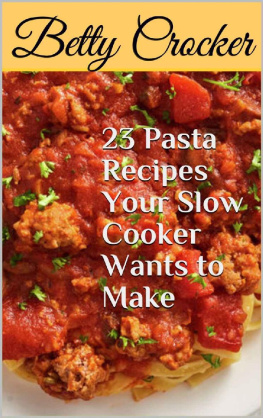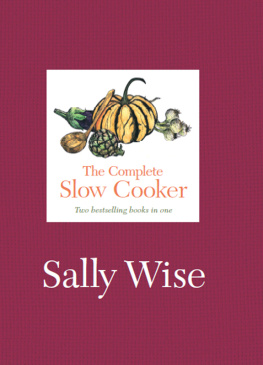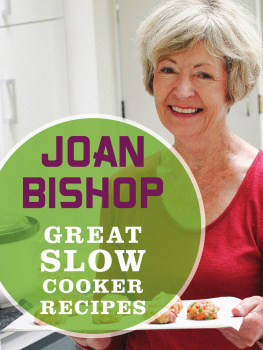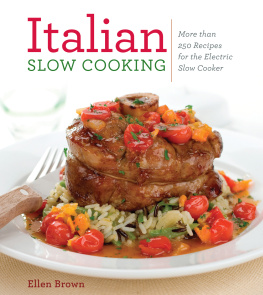
Table of Contents
Introduction
For those of us who love good food but have little time to spend cooking, slow cookers can fit perfectly into our busy lifestyles. They can be used day or night, and you don't have to stay in to keep an eye on the pot. Just prepare the ingredients and put them in your slow cooker before leaving home. Whether you are working, shopping, gardening or exercising at the gym, you can rest assured that a meal is simmering away gently on a low setting, ready to be served up when you get home. And if you happen to be an hour late, you don't have to worry because there is little chance of the food spoiling. In other words, the food will be ready when you are. You can even cook meals overnight for the following day - literally in your sleep!
There are other advantages, too. Because a slow cooker uses only slightly more electricity than a light bulb, you are also economising on fuel, and the efficient insulation built into the slow cooker means that only the food inside it heats up and not the whole room - so you won't have to put up with steamy windows and overheated kitchens.
Flavour and quality are also enhanced by the gentle heat of the slow cooker. There is less evaporation so there is little chance of the food drying out. The steam condenses on the underside of the lid and returns to the cooking pot, sealing in heat, flavour, soluble nutrients and cooking odours. The long cooking time tenderises cheaper, tougher cuts of meat and mingles flavours to make the best soups, stews and casseroles you have ever tasted.
And, perhaps best of all, nothing will ever stick to the bottom as it does with a saucepan or frying pan!
As an additional benefit, your oven and hob are freed up - particularly useful when cooking for crowds.
I hope you will enjoy trying the recipes in this book as much as I enjoyed creating them. Some are traditional old faithfuls but others are brand new, bringing us up to date with today's ingredients and the way we eat now. I hope, too, that you will use the recipes as a basis to experiment and develop your own favourite ideas, so that your repertoire of delicious meals, all cooked in your slow cooker, continues to grow.

Choosing a Slow Cooker
Slow cookers come in a variety of shapes, sizes and colours. The most popular types have an outer casing made of plastic or metal, plus an inner metal casing and the heating elements situated between the two. The cooking pot is usually removable for easy washing up, and topped with a well-fitting glass or stoneware lid. Some models consist of a removable metal dish that sits on a heated base, so it heats from the bottom only. These have the advantage of being able to brown meat in the pot and bring the contents to the boil on the hob first but they have one heat setting and are available in one size.
The heat settings usually available are Low (for all-day cooking) and High (for preheating, for cooking foods such as whole poultry and steamed puddings, and for speeding up cooking). In addition, there is usually an automatic or Auto function (where cooking starts on High and automatically switches to Low for the remaining cooking time).
Choose a slow cooker with a capacity to suit your specific needs and consider whether you will use it for entertaining or for making extra quantities for the freezer. If you regularly cook for only one or two, then a small capacity will be fine, but if you cook for four or more, cook for the freezer or entertain regularly, a large capacity will suit you better.
The shape of the cooking pot is also important. A wide one will be easier to use for foods that need to be cooked in a single layer. A deep pot will easily accommodate a pudding basin. Your choice will depend on what quantity and type of foods you are likely to cook.
Finally, before buying, do spend a little time looking at the manufacturers instructions and recipes, to check that the slow cooker is likely to live up to your expectations. Its real forte is cooking dishes that need long, slow, gentle cooking, such as soups, casseroles, pot roasts and puddings; a slow cooker cannot do everything though what it does it does supremely well!

Getting Started
Always read and follow the manufacturer's instructions. This is an obvious statement, I know, but you would be surprised how many people just don't bother.
General hints on using your slow cooker
Before starting a recipe, check whether preheating is necessary. Preheating is particularly important when using the one-step method and for cooking whole poultry and steamed puddings. Preheating should be done with the lid on. While the slow cooker is heating, prepare the ingredients.
- When you are ready to start cooking, place the ingredients in the cooking pot. Fill it to a maximum of 2.5 cm/1 in from the top.
- Dishes to be cooked in your slow cooker must contain some liquid.
- Never leave a slow cooker containing prepared, uncooked ingredients in the kitchen, to be switched on later, and do not store the removable cooking pot in the fridge. If you are not going to start cooking immediately, store the prepared ingredients in a separate container in the fridge.
- Put the lid on, select the heat setting and cook for the recommended time. Leave the slow cooker undisturbed during the cooking period and keep the lid on. If you cannot resist the temptation to lift the lid and peek inside, you will need to add about 30 minutes on to the total cooking time in order to regain the lost heat.
- The cooking time on High is just over half of that on Low. If you need to speed things up, simply switch to the High setting.
- The Low setting cooks very gently with hardly any simmering - ideal for casseroles and custard puddings, for instance. The High setting is suitable for foods that can, or need to, simmer and actually boil - for example, the water around steamed puddings.
- Avoid positioning the slow cooker in direct draughts. If the room is very cold, you may need to allow a slightly longer cooking time, particularly when cooking on Low. If, at the end of the cooking time, the food is not ready, replace the lid, switch to High and continue cooking for a further 30-60 minutes.
- Once the food is cooked, it can be kept warm in the slow cooker on Low if necessary.
- If your slow cooker has a removable pot, cooked dishes can be browned under the grill (broiler) or covered with a topping and crisped in a preheated oven. Check in your instruction book first.
- Any food left over after serving should be transferred from the cooking pot, cooled, then chilled or frozen.
- Cooked food should not be reheated in the slow cooker - it would take too long to reach a high enough temperature to ensure that bacteria were destroyed.
Preparing and using ingredients
Like all cooking methods, slow cooking demands its own special techniques. To get the best results, follow these guidelines.
- Trim meat of excess fat and cut into even-sized cubes.
- Slice vegetables thinly or cut them into small dice. This is necessary because - surprisingly - vegetables take longer than meat to cook in a slow cooker. Apparently, this is because they need to reach a higher temperature in order to begin cooking. If you don't want to cut them too small, place them near the bottom of the pot, below the meat, and make sure they are completely covered with the cooking liquid.
Next page
